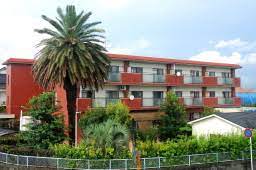WHY STUDY IN JAPAN?
Excellent Education
The greatest appeal of studying in Japan is its academic environment, where one can study state-of-the-art technology and acquire the knowledge that enabled Japan's phenomenal postwar economic growth. Whether it is electronics, Japanese literature, medicine, or international business administration, Japanese universities and other institutes of higher education can offer course studies or research programs of virtually any field. Similarly, Japan has produced many outstanding researchers in diverse fields.
Rich Culture and Nature
Modern Japanese culture and society consist of a diverse mix of the old and new, the East and West, and the natural and artificial. These seemingly contradictory elements coexist in harmony in Japan. With age-old Japanese traditions, as typified by those nurtured from the Azuchi-Momoyama Peod (late 16th to early 17th century) to the Edo Period, which lasted nearly 300 years, at its foundation, Japan flexibly assimilated the culture of Western civilization later introduced to its soil.
Japan is also a country with rich nature, diverse topography, and beautiful seasons. Haiku verse, which has blossomed by absorbing the natural essence of each season, is an example of a very unique Japanese literary culture. The country's rich variety of local festivals, annual events, and folk entertainment are also most likely the result of Japan's nature and topography.
Japanese Arts and Crafts
Japan boasts extraordinary skills and techniques in the production of arts and crafts. From the late 19th to the early 20th centuries, a vogue for Japanese culture called "Japonisme" appeared in Europe and the United States. Japanese arts and crafts heavily influenced the Art Nouveau movement, and impressionist artists such as Claude Monet and Pierre Auguste Renoir, who created many masterpieces, were strongly influenced by Japanese Ukiyo-e wood prints.
Japanese arts and crafts have a very long history and are highly appreciated for fine technical qualities and beauty. They continue to be loved around the world. An international student will get enough time to understand this Japanese Arts.
Japanese Animation
It was not long ago that "Spirited Away (Sen to Chihiro no Kamikakushi)" received the Academy Award for the best animated feature film. Japanese animation (anime) is highly recognized around the world. "Superflat Monogram," a colorful animated piece produced as part of a collaboration between Japanese animator Takashi Murakami and Louis Vuitton's artistic director Marc Jacobs, has attracted major attention in the news recently. There are many different ways of studying in Japan. Regardless of the course you choose, from Japanese-language training to postgraduate studies, we are confident that coming in touch with Japanese culture and lifestyles will prove to be an invaluable experience for you.

